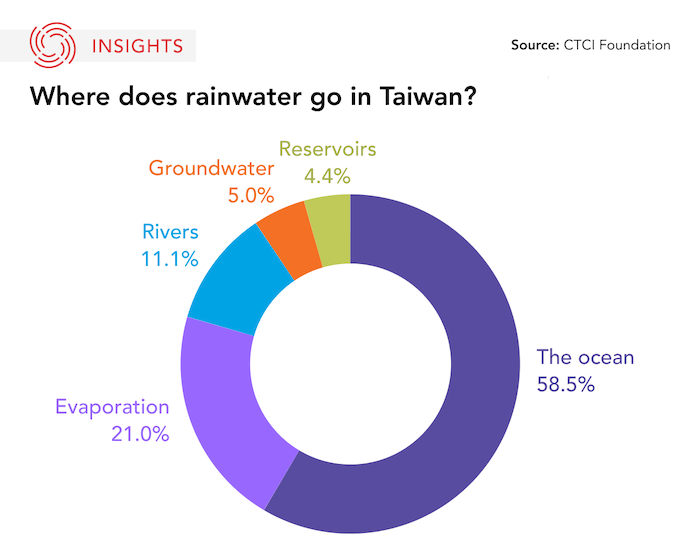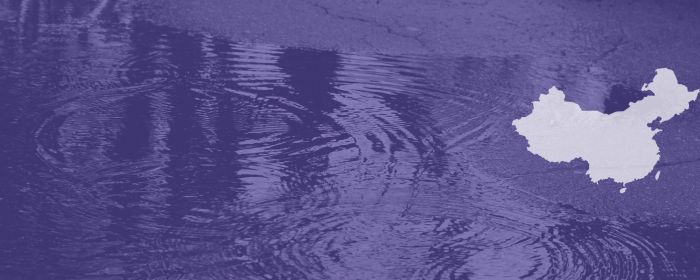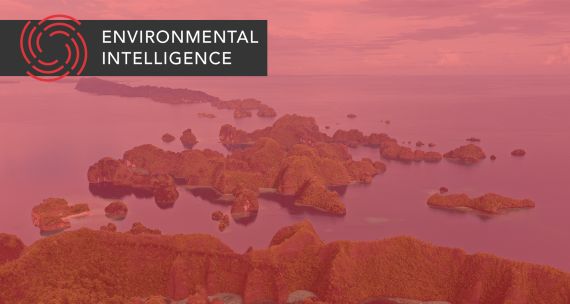The Takeaway
A wave of reservoir “red alerts” in Taiwan have brought renewed attention to the island’s water crisis. Climate change, which has disrupted cyclone patterns in East Asia, endangers Taiwan’s reliance on rainfall for water. The island’s residents and its leading-edge high-tech industry must adapt to water scarcity to preserve economic prosperity.
In Brief
Multiple water reservoirs across Taiwan are less than 25 per cent full as of early March 2023. Wang Mei-hua, the island’s economic minister, convened the first drought emergency operations meeting on March 1. Tainan and Chiayi imposed water restrictions on February 18, while Kaohsiung began restricting water use in the evenings starting March 8.
Taiwan, a subtropical island, is known for its lush forests and heavy rainfall. However, it is also one of the world’s most water-scarce jurisdictions. As early as 1999, experts warned that desertification was expanding beyond the island’s far south and into the urbanized north. Even when rainfall volumes are normal, only 20 per cent of the rainwater Taiwan receives can be used as a water source. Besides, Taiwan’s reservoirs suffer from siltation, with sediment taking up around a third of water reservoir capacity across the island.

Taiwan’s cornerstone high-tech industry is extremely water-intensive. Taiwan Semiconductor Manufacturing Co. (TSMC) alone is set to use around 381,017 tonnes of water per day by 2027 — the same amount 1.4 million residents use in one day. Intensifying droughts in Taiwan pose grave challenges to the global semiconductor supply chain. The current water shortage brings back memories of the 2021 “once-in-a-century” drought, during which chip fabrication plants could not operate normally. The shortage in Taiwan exacerbated one of the worst global semiconductor shortages in recent memory.
Implications
Former interior minister Lee Hong-yuan predicted in 2020 that half of Taiwan’s water reservoir capacity would be taken up by sediment in 2030. Though reservoir sediment is seen in most reservoirs in the world, Taiwan is particularly vulnerable due to its reliance on typhoons. A single typhoon can bring 181.4 tonnes of sediment into Taoyuan’s Shih-men Reservoir, while it would take an entire year of work to remove 54,431 tonnes — or 300 typhoons’ worth. Even with extraordinary investment into sediment removal, Taiwan's reservoirs already no longer hold enough water for the island’s peoples and industries. In addition, Taiwanese pay the lowest fees for water in all of Asia. Experts have long recommended that the government raise water charges to combat waste, but with a presidential election in 2024 and rising costs of living, the current administration may not be willing to risk public dissatisfaction.
During the 2021 drought, farmers in Taiwan were infuriated after authorities cut off their irrigation to supply chip firms with water, spoiling farmers’ crops for an entire season. High-tech manufacturing is a major culprit of Taiwan’s water woes, but many argue that it’s reasonable to prioritize the industry’s water supply. Taiwanese media often call chipmaking the island’s “sacred mountain of national protection.” The industry is critical not only to the island’s economy, but also to its geopolitical survival against Beijing’s wishes. If climate-related production disruptions become a pattern, it could discourage global technology giants from ordering made-in-Taiwan semiconductors and harm Taiwan’s position in the global technology supply chain.
What's Next
- "Plum rain” saves the day (for now)
“Plum rain” season, an annual monsoon period across coastal East Asia, is expected to arrive in Taiwan in May. It is hoped that plum rain will bring temporary relief, especially to southern Taiwan’s farmlands. However, with extreme weather becoming more common, there are also worries that a strong plum rain season could lead to flooding.
- High-tech industries build climate resilience
As regular droughts become an annual challenge, Taiwanese factories must build up climate resilience. Wayne Wang, director-general of the Hsinchu Science Park (HSP) Bureau, said on March 6 that the 10 biggest water users at HSP, including TSMC, have cut water usage by five per cent as of March 1, in preparation for drought season. Climate risk awareness and environmental, social, and governance targets could incentivize chip firms to pursue innovative means of reducing water consumption.
- Water rationing becomes the new normal
Taiwanese jurisdictions now commonly ration water between November and April. As policies like lowering the water pressure in the evening become entrenched, citizens may shift their behaviour and gradually reduce water use in daily life.
• Produced by CAST's Greater China team: Maya Liu (Program Manager); Liam Lau (Analyst); and Irene Zhang (Analyst).




